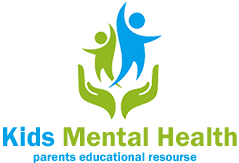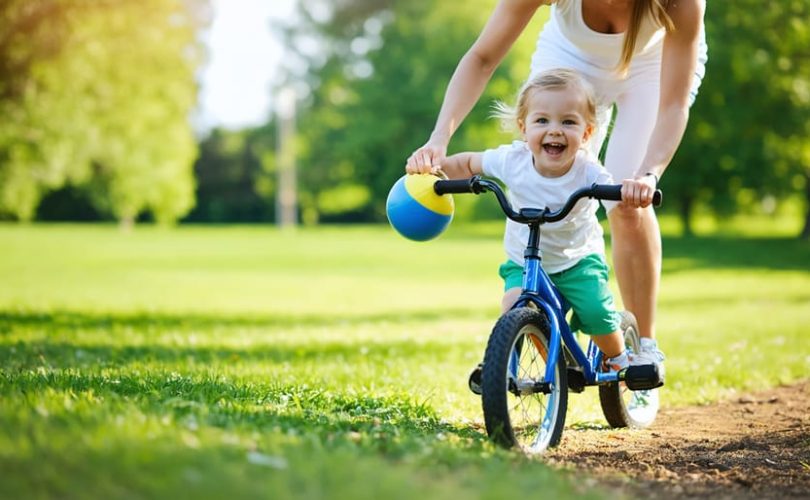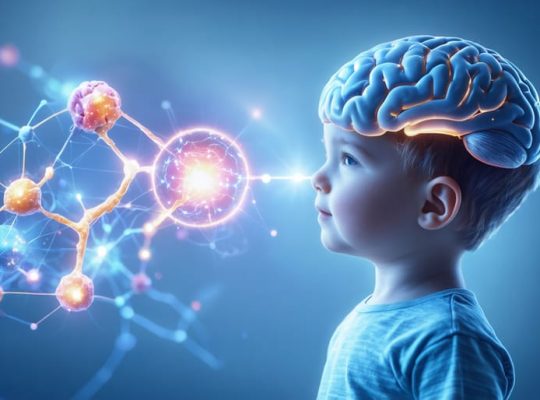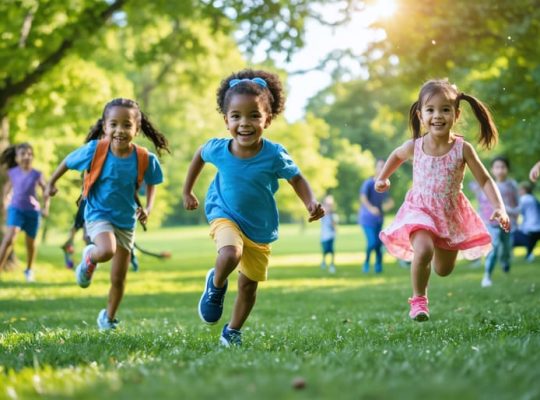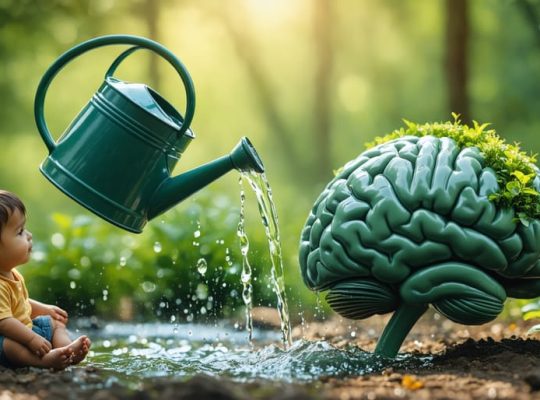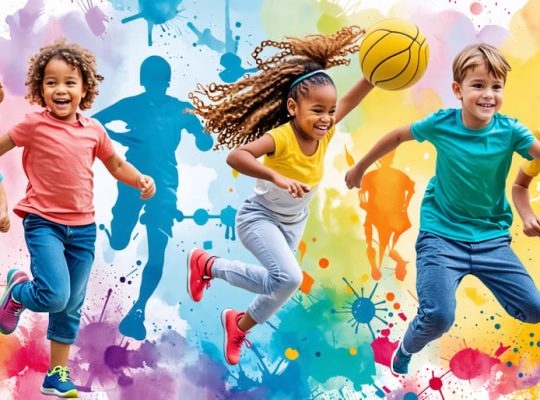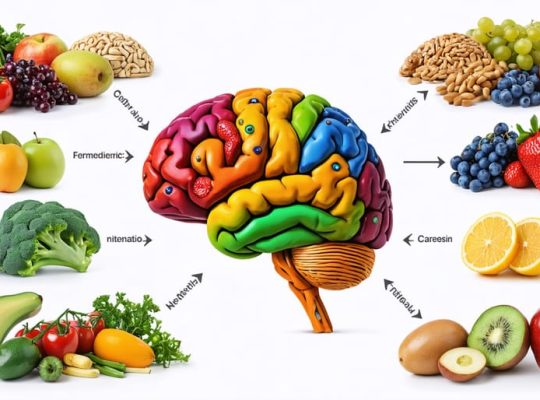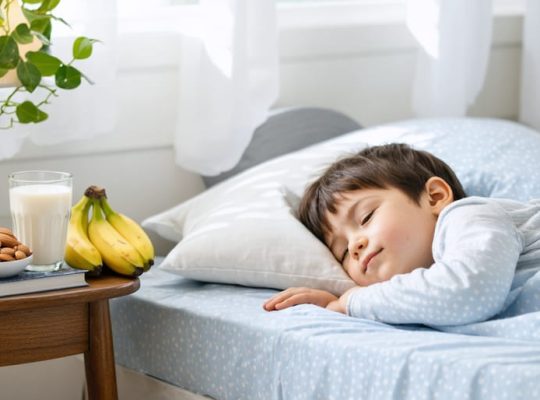Exercise isn’t just about physical fitness – it’s a powerful tool that can boost your child’s mental health in remarkable ways. When children engage in regular physical activity, their brains release mood-enhancing chemicals called endorphins, which naturally combat anxiety and depression. Recent research shows that just 30 minutes of daily movement can improve concentration, reduce stress levels, and enhance self-esteem in young people.
As parents and caregivers, we often focus on academic achievement and structured activities, but the mental health benefits of physical exercise are equally crucial for our children’s overall development. From improved sleep patterns to better emotional regulation, the positive effects of regular movement extend far beyond the playground. Whether it’s a family bike ride, a dance party in the living room, or organized sports, incorporating exercise into daily routines creates a foundation for lifelong mental wellness.
Let’s explore how movement can transform your child’s emotional landscape and discover practical ways to make exercise an enjoyable part of their daily life.
How Physical Activity Shapes Your Child’s Brain
The Science Behind Exercise and Brain Development
When children exercise, amazing changes happen in their brains that boost both their mental and physical well-being. Physical activity triggers the release of special chemicals called endorphins, often referred to as “feel-good hormones,” which help improve mood and reduce stress naturally.
Regular exercise also increases the production of BDNF (Brain-Derived Neurotrophic Factor), which works like a natural fertilizer for brain cells, helping them grow and form new connections. Dr. Sarah Thompson, a pediatric neurologist, explains, “It’s like giving your child’s brain the building blocks it needs to develop and learn better.”
Exercise promotes better blood flow to the brain, delivering more oxygen and nutrients that support cognitive function. This improved circulation helps children concentrate better in school and enhances their memory. Studies have shown that active children often perform better academically and show improved problem-solving skills.
Additionally, physical activity stimulates the growth of new brain cells in areas responsible for learning and memory, particularly the hippocampus. This explains why children who exercise regularly often show better attention spans and stronger emotional regulation skills.
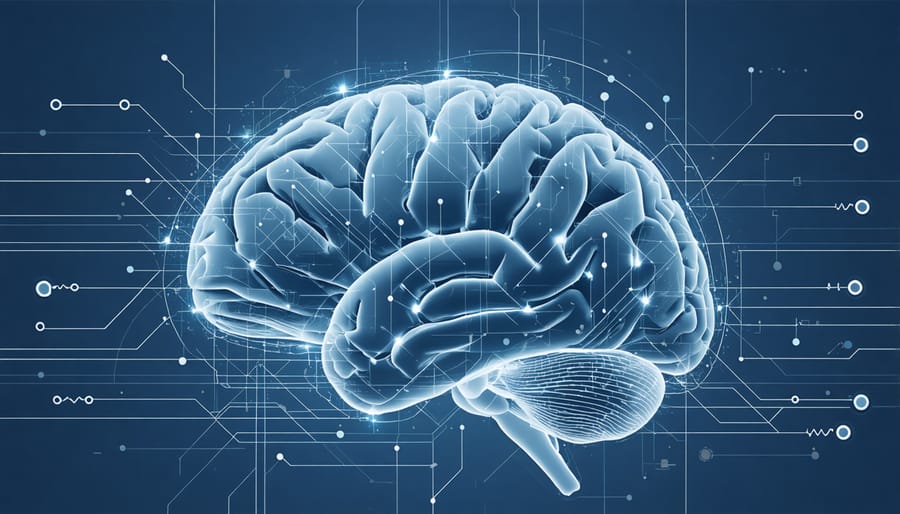
Key Brain Benefits for Children
Regular physical activity provides remarkable benefits for children’s developing brains. Studies show that active children typically demonstrate better memory retention and can recall information more quickly than their less active peers. As Dr. Sarah Johnson, a pediatric neurologist, explains, “Exercise increases blood flow to the brain, which helps create new neural connections essential for learning.”
Children who exercise regularly often show improved concentration in class and can stay focused on tasks for longer periods. This enhanced attention span naturally leads to better academic performance across various subjects. A recent study found that students who participated in 30 minutes of daily physical activity showed a 20% improvement in test scores compared to those who remained sedentary.
Exercise also boosts children’s cognitive flexibility – their ability to switch between different concepts and adapt to new situations. This skill is crucial for problem-solving and creative thinking. Additionally, physical activity stimulates the release of brain-derived neurotrophic factor (BDNF), often called “miracle-gro for the brain,” which supports the growth of new brain cells and strengthens existing ones.
Parents often report that their children seem more alert and receptive to learning after physical activity, whether it’s playground time or organized sports.
Emotional and Social Benefits of Exercise
Building Confidence Through Movement
Movement and physical activity can work wonders for a child’s self-confidence and self-esteem. When children master new physical skills – whether it’s learning to ride a bike, scoring their first basketball goal, or completing a challenging hike – they experience a powerful sense of accomplishment that extends far beyond the activity itself.
Dr. Sarah Thompson, a child psychologist, explains, “Each physical achievement becomes a building block for self-confidence. When children see what their bodies can do, they develop a stronger sense of capability and resilience.”
This confidence-building effect is particularly noticeable in group activities. A child who successfully learns a new dance move or helps their team win a game experiences not just personal pride, but also social validation from peers and coaches. These positive experiences create a reinforcing cycle: increased confidence leads to more willingness to try new activities, which in turn builds even more confidence.
Even simple achievements, like improving flexibility or running a longer distance, give children tangible evidence of their progress and capabilities. This physical proof of improvement can be especially powerful for children who might struggle in other areas of their lives.
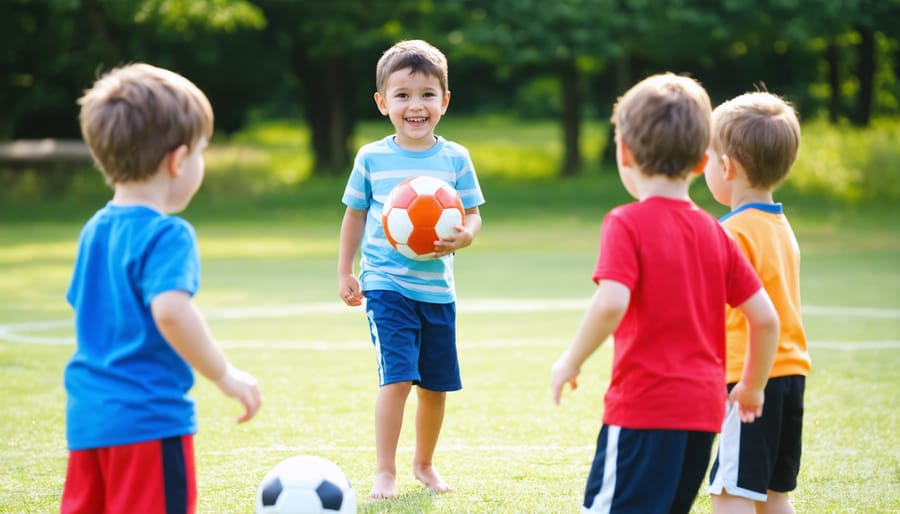
Social Skills and Team Activities
Exercise isn’t just about physical health – it’s a powerful way to build social connections and develop crucial life skills. When children participate in group activities and sports, they learn valuable lessons about cooperation, communication, and friendship. The benefits of team sports extend far beyond the playing field, creating opportunities for children to develop emotional intelligence and social confidence.
Sarah Johnson, a child psychologist, shares: “In my practice, I’ve seen remarkable transformations in children who join sports teams or exercise groups. They develop stronger self-esteem, better leadership skills, and lasting friendships.”
Group exercise activities provide natural opportunities for children to:
– Practice conflict resolution
– Learn to celebrate others’ successes
– Develop empathy and support skills
– Build trust with peers
– Experience belonging in a community
These social connections formed through physical activity often become protective factors for mental health, creating support networks that children can rely on during challenging times. Whether it’s a soccer team, dance class, or neighborhood basketball game, group exercise helps children develop the social skills they’ll need throughout their lives.
Exercise as a Mental Health Tool
Managing Anxiety and Stress
Exercise serves as a powerful natural anxiety-reducer for children, offering both immediate and long-term relief from stress and worry. When kids engage in physical activity, their bodies release endorphins – often called “feel-good hormones” – which help create a natural sense of calm and well-being. These hormones work alongside reduced cortisol levels (the stress hormone) to help children feel more balanced and peaceful.
Active play and structured exercise provide children with healthy outlets for nervous energy and racing thoughts. Whether it’s running around the playground, participating in team sports, or doing yoga, physical movement helps kids redirect anxious feelings into positive action. Many children report feeling “lighter” and more relaxed after exercise sessions.
Dr. Sarah Chen, a child psychologist, explains: “Exercise gives children a sense of control over their bodies and emotions, which is particularly important when dealing with anxiety. The rhythmic nature of activities like jumping rope or swimming can also have a meditative effect.”
Regular physical activity also improves sleep quality and builds self-confidence, both crucial factors in managing childhood anxiety. When children feel strong and capable in their bodies, they often develop better emotional resilience and coping skills for handling stressful situations.
Supporting Better Sleep and Mood
Regular physical activity has a remarkable impact on both sleep quality and emotional stability. When children engage in exercise during the day, their bodies naturally prepare for better rest at night. As Dr. Sarah Thompson, a pediatric sleep specialist, explains, “Physical activity helps regulate the body’s natural sleep-wake cycle, making it easier for children to fall asleep and stay asleep throughout the night.”
Exercise triggers the release of endorphins, often called “feel-good hormones,” which help stabilize mood and reduce anxiety. Nine-year-old Marcus’s mother shares, “Since joining the after-school sports program, Marcus not only sleeps better but also seems more emotionally balanced throughout the day.”
The connection between exercise and improved sleep creates a positive cycle: better sleep leads to better mood regulation, while improved mood encourages more active participation in physical activities. This is especially important during challenging times when children might feel stressed or overwhelmed.
Even moderate activity, like a 30-minute walk after dinner or playing in the backyard, can make a significant difference. The key is consistency rather than intensity, creating a reliable routine that supports both quality sleep and emotional well-being.
Making Exercise Fun and Accessible
Age-Appropriate Activities
Every stage of life benefits from different types of physical activity. For young children (ages 2-5), age-appropriate activities include dancing, playground play, and simple ball games that develop coordination while bringing joy and social interaction.
School-age children (6-12) thrive with team sports, swimming, cycling, and structured physical education classes. These activities build confidence, teach cooperation, and help manage stress through positive peer interactions.
Teenagers benefit from more varied options like organized sports, yoga, weight training, or martial arts. These activities can help them cope with academic pressure while building self-esteem and body awareness.
Adults should aim for a mix of cardio (walking, jogging, swimming) and strength training, adapting intensity to their fitness level. Group fitness classes can provide both exercise and social support.
Seniors can maintain mental clarity and emotional well-being through gentle activities like tai chi, water aerobics, or walking groups. These lower-impact exercises promote balance, flexibility, and social connection while supporting cognitive function.
Creating Healthy Exercise Habits
Creating healthy exercise habits doesn’t have to be complicated or overwhelming. Start by making physical activity a natural part of your family’s daily routine. Take regular evening walks together, dance while doing household chores, or play active games in the backyard. Remember, children learn by example, so your enthusiasm for exercise matters.
Make physical activity fun rather than a chore. Let your child choose activities they enjoy, whether it’s swimming, cycling, or playing soccer. Consider scheduling “active playdates” where children can engage in physical games with friends, making exercise a social experience.
Break up sedentary time with movement breaks. During homework sessions, encourage short stretching or jumping jack intervals. On weekends, plan family activities like hiking, playing catch, or visiting parks with playground equipment.
Set realistic goals together and celebrate achievements, no matter how small. Instead of focusing on performance or competition, emphasize the joy of movement and how it makes us feel energized and happy. This positive association helps children develop a lifelong appreciation for physical activity.
Remember to be patient and consistent. Building healthy habits takes time, but the mental and physical benefits are worth the effort.
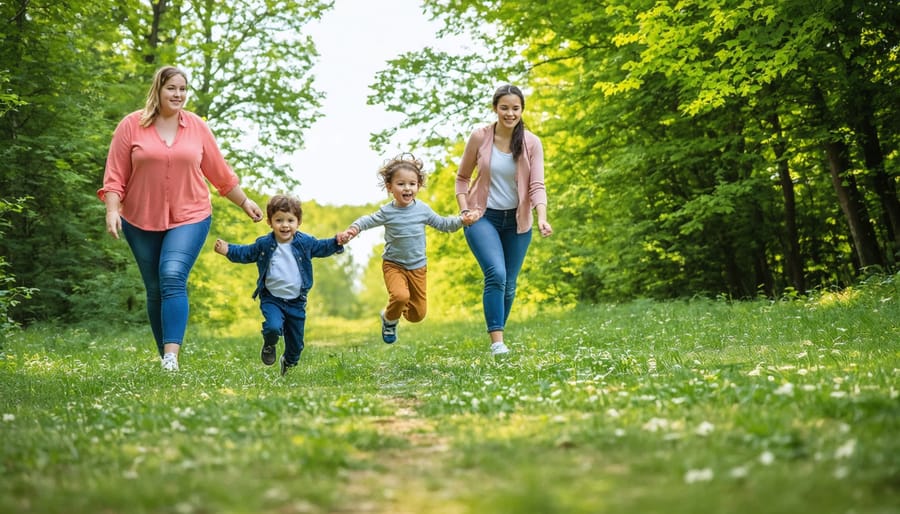
Exercise is a powerful tool for supporting both physical and mental well-being in children. As we’ve explored, regular physical activity can reduce anxiety, improve mood, boost self-esteem, and enhance cognitive function. By making exercise a family priority, you’re not just investing in your child’s physical health – you’re nurturing their emotional resilience and mental wellness for years to come. Remember, exercise doesn’t have to be complicated or structured; simple activities like family walks, backyard games, or dance parties can make a significant difference. Start small, stay consistent, and celebrate every active moment with your child. Your commitment to incorporating regular movement into your family’s routine is one of the greatest gifts you can give to your child’s mental health and overall development. Let’s move forward together in creating happier, healthier futures for our children through the power of physical activity.
